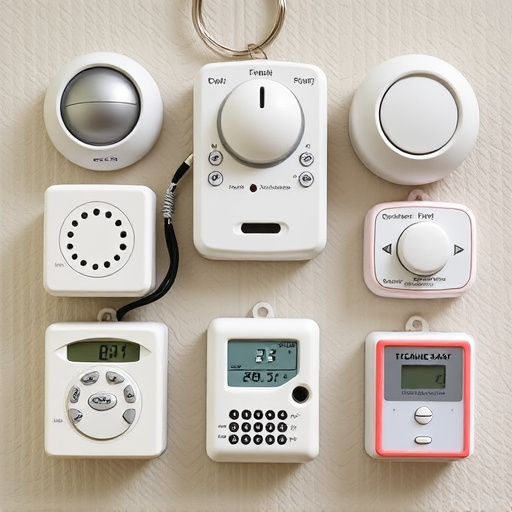Electronic personal safety alert systems with sirens offer enhanced security and peace of mind through their battery-powered operation. Effective personal safety sirens emit high-decibel sounds to deter threats and attract help, with lithium-ion batteries providing longer lifespans despite environmental factors. Regular maintenance, including battery checks and testing, ensures optimal battery life for these essential tools during daily activities and outdoor adventures.
Staying safe in an uncertain world is paramount, and electronic personal safety alert systems offer crucial protection. These devices, often featuring a powerful Personal Safety Siren, can deter threats and signal for help. Understanding key components, battery life considerations, and best practices ensures their effectiveness.
In this guide, we demystify these systems, focusing on how to maintain continuous personal protection with optimal Personal Safety Siren Battery Life as a top priority.
- Understanding Electronic Personal Safety Alert Systems
- Key Components of Effective Personal Safety Siren
- Factors Influencing Battery Life in Personal Safety Devices
- Best Practices for Maintaining Continuous Personal Protection
Understanding Electronic Personal Safety Alert Systems
Electronic personal safety alert systems, often featuring a powerful Personal Safety Siren, are designed to enhance individual security in various situations. These innovative devices typically rely on battery power for their operation, ensuring a reliable source of protection when needed most. The battery life of these systems varies among models, but many modern options offer extended runtimes, allowing users to stay protected for longer periods without frequent recharging.
Understanding how these systems work is crucial. When activated, the siren emits a loud and distinct sound, designed to deter potential threats and attract attention from nearby individuals or authorities. This simple yet effective mechanism can be the difference between a dangerous encounter and a safe outcome. Users can conveniently carry these personal safety alert systems while traveling, hiking, or even during daily commutes, giving them peace of mind and an added layer of protection.
Key Components of Effective Personal Safety Siren
A personal safety siren, an essential component of any electronic personal safety alert system, serves as a loud and powerful signal for help in emergency situations. To be effective, it must possess several key features. Firstly, the siren’s decibel level should be high enough to attract attention from a distance, ensuring that passersby or nearby authorities can hear the alarm. Secondly, durability is paramount; the siren should be built to withstand harsh conditions and potential rough handling during an emergency.
Moreover, battery life plays a crucial role in determining the reliability of these systems. Long-lasting batteries are vital to ensure the device remains operational when needed most. Users should look for sirens equipped with high-capacity batteries that offer extended runtimes, allowing for continuous alerts until help arrives or ensuring backup power during prolonged emergencies. This feature is particularly important in outdoor settings where access to electrical outlets may be limited.
Factors Influencing Battery Life in Personal Safety Devices
Several factors significantly influence the battery life of personal safety devices, such as electronic sirens. One key factor is the device’s power consumption, which can vary based on its features and functionality. For instance, constant vibration or high-intensity lighting can drain batteries faster. Additionally, environmental conditions play a crucial role; extreme temperatures, whether hot or cold, can impact battery performance and longevity.
Another important aspect is the type of battery used. Different battery technologies have varying lifespans and energy densities. Lithium-ion batteries, commonly found in modern personal safety devices, offer improved energy efficiency and longer cycle life compared to traditional options. Regular maintenance, such as keeping the device clean and ensuring proper storage when not in use, can also contribute to maximizing battery life for these essential personal safety sirens.
Best Practices for Maintaining Continuous Personal Protection
To ensure continuous personal protection, regular maintenance and checks are crucial for electronic personal safety alert systems. Users should establish a consistent routine to inspect the device’s battery life, ensuring it remains fully charged or at optimal levels. This involves regularly replacing batteries or utilizing portable chargers, especially for outdoor activities or extended periods away from reliable power sources.
Additionally, it is recommended to familiarize oneself with the system’s functionalities and settings, allowing for swift responses in emergency situations. Testing the alert system periodically can help maintain its reliability, ensuring the siren operates effectively when needed. These best practices contribute to enhanced personal safety, providing peace of mind and a sense of security throughout daily activities.
Electronic personal safety alert systems, armed with powerful features like sirens and GPS tracking, offer crucial protection in emergencies. Understanding these devices’ key components and best practices ensures their effectiveness, especially regarding battery life management. By optimizing placement, utilizing charging stations, and adopting regular maintenance routines, users can leverage these tools to provide continuous personal safety, making them indispensable companions in today’s world.
